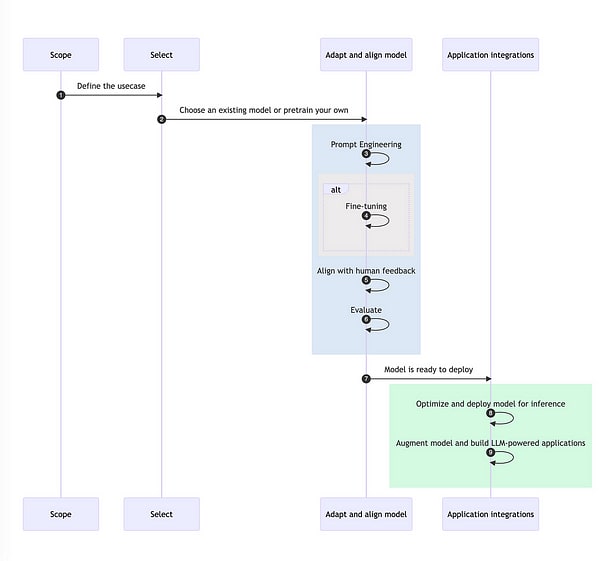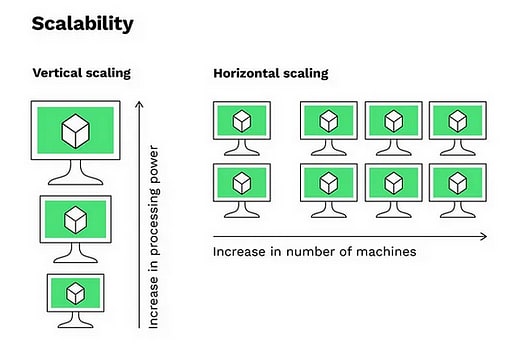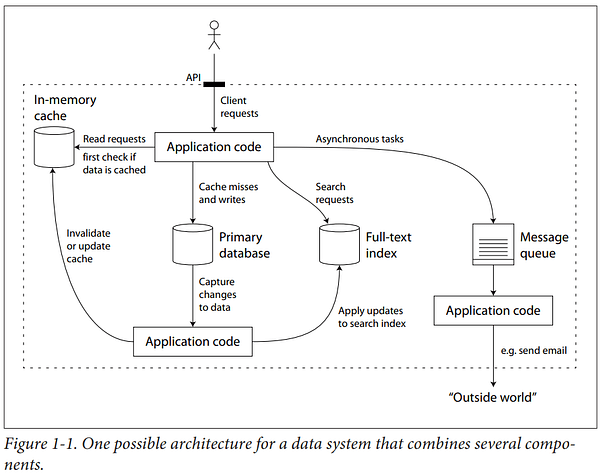Disclosure: This post includes affiliate links; I may receive compensation if you purchase products or services from the different links provided in this article.
Hello guys, In the ever-evolving landscape of software and system design, the book "Designing Data-Intensive Applications" by Martin Kleppmann emerges as a potential game-changer.
The question that looms for many prospective readers is whether this book is worth the investment or not as reading a book is not easy and also you need to keep in mind that it's not a $10 book.
Having gone through the pages of this comprehensive guide, I can confidently assert that it is indeed a worthwhile investment for anyone seeking a deeper understanding of data-intensive application design.
Whether you are preparing for a system design interview or want to become a Software Architect or just a better Software engineer this is one of the books you should read.
I have read many books on Software architecture and System designs including System Design Interview --- An Insider's Guide by Alex Xu, which many people recommend to read before interview. Still, I found that "Designing Data-Intensive Applications" is much more comprehensive and touches more bases then Alex's book.
Let's check out the reasons why I think this is a great book and why every developer and architect should read it.
1. Exploring the Depths of Data
Kleppmann's work commences by unraveling the intricacies of data systems, providing a foundational understanding of databases and their evolutionary models.
The exploration extends to various types of databases, each dissected to unveil their strengths and weaknesses. For those navigating the waters of data storage solutions, this section serves as a valuable compass for informed decision-making.
2. Demystifying Distributed Systems
The complexity of modern applications often demands a grasp of distributed systems, and "Designing Data-Intensive Applications "adeptly demystifies this realm. From consistency models to distributed transactions, the book not only elucidates theoretical concepts but also breathes life into them through real-world examples and case studies.
This practical approach ensures that readers can apply their newfound knowledge to the challenges of building and maintaining distributed systems.
Here are a few questions you can master after reading this chapter:
- What is data replication? Which problems can occur during replication (at multi-leader and leaderless setups)?
- What is data partitioning, and how may it fail?
- Do you need to care about serializability when working with transactions? What are the different ways how transactions can cause errors?
- What are the pros and cons of batch versus stream processing, and which errors may occur during data processing?
3. Navigating Fault Tolerance and Reliability
Acknowledging the inevitability of system failures, the book turns its attention to fault tolerance and reliability. "Designing Data-Intensive Applications"delves into the mechanisms and strategies that underpin resilient systems, offering insights into replication, partitioning, and consensus algorithms.
The result is a guide that equips readers to design systems capable of withstanding failures and recovering gracefully.
- Which errors can occur to distributed systems? What is the difference between network failures, unsynchronized clocks, and consensus violations?
4. Scaling Systems Seamlessly
Scalability is a key consideration in the design of modern applications, and Kleppmann leaves no stone unturned in exploring this critical aspect.
Whether discussing horizontal and vertical scaling, load balancing, or partitioning, the book provides actionable insights into designing systems that can grow seamlessly with increasing demands.
The author's clear prose and illustrative examples demystify complex scalability concepts, ensuring readers are well-prepared for the challenges of a growing user base.
5. Bridging the Divide with Data Integration
In an era of dispersed data, effective data integration is paramount. "Designing Data-Intensive Applications"navigates the challenges and patterns for achieving interoperability between disparate systems, covering batch processing, stream processing, and the principles of data consistency.
This section serves as a roadmap for architects and developers aiming to build cohesive and interconnected data ecosystems.
6. Learning from the Masters: Case Studies
A compelling feature of the book is the inclusion of real-world case studies. Kleppmann analyzes successful systems such as Apache Kafka, Apache HBase, and Amazon DynamoDB, providing a deep dive into design decisions, trade-offs, and lessons learned.
These case studies serve as invaluable lessons, allowing readers to glean insights from battle-tested solutions and avoid common pitfalls.
7. Future Directions in Data
As technology advances, so too must our understanding of data systems. "Designing Data-Intensive Applications"concludes the book by peering into the future of data-intensive applications.
Discussions on trends like serverless computing, machine learning, and the rise of new databases provide readers with a forward-looking perspective, encouraging them to stay abreast of emerging technologies and paradigms.
Strong and Weak points of the "Designing Data-Intensive Applications" book?
"Designing Data-Intensive Applications" by Martin Kleppmann is widely regarded as an excellent resource, but like any book, it has its strengths and weaknesses. Let's delve into both aspects:
Strong Points:
- **Comprehensive Coverage: **The book provides an in-depth exploration of various topics, covering foundational concepts, distributed systems, fault tolerance, scalability, and data integration. This comprehensive approach makes it a go-to reference for a broad range of data-related subjects.
- **Practical Insights and Real-World Examples: **Kleppmann uses real-world examples and case studies to illustrate theoretical concepts. This practical approach helps readers connect the dots between theory and real-world application, making the content more accessible and valuable.
- **Accessible Writing Style: **The author employs a clear and accessible writing style, making complex topics understandable for readers with varying levels of expertise. This makes the book suitable for both beginners and experienced professionals.
- **Relevance to Modern Challenges: **The content remains relevant to contemporary challenges in the field. Kleppmann discusses emerging trends and future directions in data, ensuring that readers are equipped with insights into the evolving landscape of data-intensive applications.
- **Balanced Treatment of Trade-Offs: **The book provides a balanced perspective on design decisions and trade-offs. Understanding the inherent compromises in system design is crucial, and Kleppmann does a commendable job addressing these issues.
- **Engaging and Thought-Provoking: **The book engages readers by presenting thought-provoking concepts and challenges. This encourages critical thinking and helps readers develop a deeper understanding of the material.
- **Positive Reception: **The book has received widespread positive reviews from academics and industry professionals. Its positive reception is a testament to its quality and impact.
Weak Points:
While it's a great book, there are still a few points that can be improved or explained better
1. Complexity of Topics:
Some readers may find certain topics, especially those related to distributed systems, complex. While the author makes efforts to simplify these concepts, they inherently involve intricate details that may be challenging for beginners.
2.Not a Step-by-Step Guide:
The book is more of a conceptual guide than a step-by-step tutorial. Readers looking for hands-on, practical exercises may need to supplement their learning with additional resources.
3.Assumes Some Background Knowledge:
The book assumes a certain level of familiarity with computer science concepts. While it is accessible to a broad audience, readers without a foundational understanding of computer science may find certain sections challenging.
4.Limited Focus on Specific Technologies:
The book is not focused on specific technologies, which could be a strength or a weakness depending on the reader's expectations. Some may prefer a more technology-specific guide.
Is the "Designing Data-Intensive Applications" Book worth it?
Certainly, "Designing Data-Intensive Applications" by Martin Kleppmann is widely considered a valuable and worthwhile resource for individuals involved in software and system design, especially those dealing with data-intensive applications. Here are several reasons why this book is often deemed worth the investment:
1. Comprehensive Coverage
The book provides an extensive exploration of various aspects related to data-intensive applications, ranging from fundamental concepts of databases to advanced topics like distributed systems, fault tolerance, scalability, and data integration.
2. Practical Insights:
Martin Kleppmann combines theoretical discussions with practical insights, using real-world examples and case studies. This approach helps readers bridge the gap between theory and application, allowing for a more hands-on and applicable understanding of the concepts.
3. Clear and Accessible Writing Style
Kleppmann employs a clear and accessible writing style, making complex topics understandable to a broad audience. Whether you're a seasoned developer or a newcomer to the field, the book caters to readers with varying levels of expertise.
4. Relevance to Modern Challenges
The content is highly relevant to contemporary challenges in the field of data-intensive applications. As technology evolves, the book's discussions on emerging trends and future directions in data ensure that readers stay informed and well-prepared for the industry's dynamic landscape.
5. Real-World Case Studies
The inclusion of real-world case studies, and analysis of successful systems, allows readers to learn from practical examples. These case studies offer valuable insights into the decision-making processes, trade-offs, and lessons learned in the development of prominent data systems.
6. Balanced Perspective on Trade-Offs
Kleppmann doesn't shy away from discussing trade-offs in design decisions. This balanced perspective is crucial for architects and developers who must navigate the challenges of building systems that are not only performant but also maintainable and resilient.
7. Applicability to Diverse Audiences
Whether you are a database administrator, software architect, or a developer interested in building scalable and reliable systems, the book caters to a diverse audience. It provides a solid foundation for those starting in the field while offering deeper insights for more experienced professionals.
8. Positive Reception
The book has received positive reviews from both industry experts and practitioners. Its widespread acclaim in the software engineering community is indicative of its impact and usefulness.
For all these reasons, I strongly recommend software engineers to read this book,
here is the link to get this book on Amazon:"Designing Data-Intensive Applications"
Conclusion
In conclusion, "Designing Data-Intensive Applications" is a valuable resource with a rich set of strengths, making it a widely recommended read in the software engineering community. However, you should be aware of its complexity and the fact that it is not a step-by-step tutorial. The book's effectiveness depends on your background, goals, and preferences.
Other Programming and Books and Articles you may like
- 5 Object Oriented Design and Analysis Interview Questions
- How to Prepare for System Design Interview
- Is ByteByteGo System Design Course worth it?
- 10 essential Microservices Design Patterns and Principles
- 10 System Design Courses for Experienced developers
- Is Design Guru's System Design Interview course worth it?
- 30 System Design Interview Questions with answers
- 10 Best Software Design Course for Coding interviews
- How to Crack Java Interview First time?
- Is Grokking the System Design Interview course worth it
- Is Grokking Advanced System Design Interview worth it?
- 8 Best Courses to learn SOA and Microservices Architecture
- 10 Best Places to Learn System Design in 2024
Thanks for reading this article so far. If you like my review of "Designing Data-Intensive Applications" book then please share it with your friends and colleagues.
P. S. --- If you are preparing for a Software developer interview then you must prepare for System design questions, The same with Machine learning engineers, they also need to prepare for System design questions like recommendation systems, etc. For such things, I highly recommend you to join Grokking the System Design Course on Design Guru its one of the best place to learn System design for interview.









Top comments (2)
I read both books that you had mentioned. Honestly those are two vastly different books. Your comparing apple to oranges.
Alex Xu is focus on system design interview prep using case studies and dissected it during a system design interview round in a step by step way.
Where as for Martin Kleppmann gives you a mental model or principles that you need to consider in building a system. The book is light on tech because your looking at how do you build a system based upon your organization's needs.
Picking a tech or doing step by step defeats the purpose as a evergreen reference guide for you to make an architecture decision.
Yes, you are right but since they are both related to software design, comparison comes.